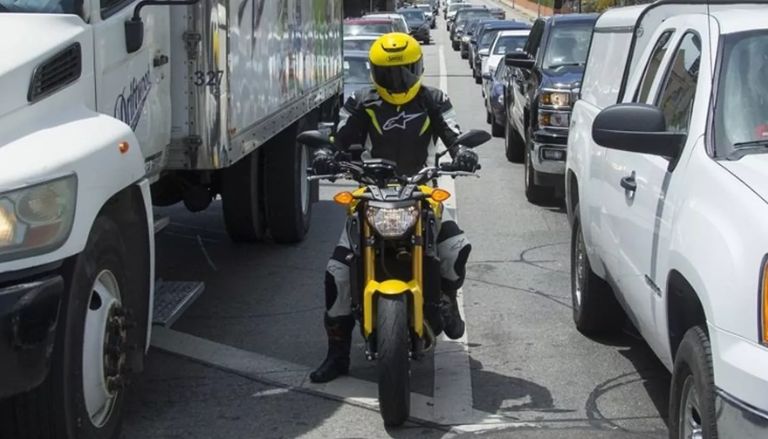As of February 2025, lane splitting remains illegal in Maryland. This practice, where motorcyclists ride between lanes of slow-moving or stopped traffic, is prohibited under Maryland law. Despite ongoing debates and legislative efforts, the state has not amended its stance on this issue.
Understanding Lane Splitting
Lane splitting, also known as “white-lining” or “stripe-riding,” involves a motorcyclist maneuvering between lanes of vehicles moving in the same direction. Proponents argue that it can reduce traffic congestion and decrease the risk of rear-end collisions for motorcyclists. However, opponents cite safety concerns, emphasizing the potential for accidents due to the unexpected presence of motorcycles between lanes.
Maryland’s Legal Position
In Maryland, the law is explicit: motorcyclists are not permitted to operate between lanes of traffic or rows of vehicles. They are entitled to full use of a lane and may ride two abreast, a practice known as lane sharing, but lane splitting is expressly forbidden.
This prohibition is outlined in the Maryland Transportation Code, which aims to ensure the safety of all road users by maintaining predictable traffic patterns. You can read more about Maryland’s motorcycle laws on the Maryland MVA website here.
Legislative Efforts and Discussions
Over the years, there have been discussions and attempts to reconsider the legality of lane splitting in Maryland. Advocates point to studies, such as the one conducted by the University of California, Berkeley, which suggest that lane splitting, when done under controlled conditions, can be relatively safe and may reduce the risk of certain types of accidents.
The study found that motorcyclists who engaged in lane splitting in traffic moving at 50 mph or less, and who did not exceed the speed of other vehicles by more than 15 mph, were less likely to suffer head or torso injuries compared to those who did not lane split. Read the Berkeley study on lane-splitting safety here.
Despite such findings, Maryland has maintained its prohibition, citing concerns about driver awareness and the potential for increased accidents. The state’s approach emphasizes uniformity in traffic laws to minimize confusion and enhance safety for both motorcyclists and drivers.
Safety Considerations
The primary concern surrounding lane splitting is safety. Opponents argue that drivers may not anticipate a motorcycle passing between lanes, leading to potential collisions, especially if a vehicle changes lanes unexpectedly. Additionally, the reduced space available for maneuvering increases the risk of accidents for motorcyclists.
Conversely, supporters highlight that lane splitting can help motorcyclists avoid rear-end collisions in stop-and-go traffic, a common scenario where motorcycles are vulnerable. They also note that in jurisdictions where lane splitting is legal and regulated, such as California, there is evidence suggesting it can be performed safely under specific conditions.
Comparisons with Other Jurisdictions
California remains the only U.S. state where lane splitting is explicitly legal. The California Highway Patrol has established guidelines to ensure that motorcyclists who choose to lane split do so safely. These guidelines recommend that motorcyclists travel no more than 10 mph faster than the flow of traffic and avoid lane splitting when traffic is moving at 30 mph or faster.
The success of these regulations has been cited by advocates in other states as a model worth considering. In contrast, Maryland’s neighboring states, such as Virginia and Pennsylvania, also prohibit lane splitting. This regional consistency reinforces the uniform application of traffic laws, aiming to reduce confusion among drivers and motorcyclists crossing state lines.
Implications for Motorcyclists in Maryland
For motorcyclists in Maryland, adhering to the current laws is crucial. Engaging in lane splitting can result in traffic citations and may have legal implications, especially if an accident occurs during the maneuver.
Moreover, Maryland follows a contributory negligence standard, meaning that if a motorcyclist is found to be even slightly at fault in an accident, they may be barred from recovering any damages. Learn more about Maryland’s contributory negligence laws here.
Conclusion
While the debate over lane splitting continues, Maryland upholds its prohibition of the practice as of February 2025. Motorcyclists are encouraged to stay informed about current laws, prioritize safety, and engage in open dialogues with policymakers if they wish to advocate for legislative changes.
For the most accurate and up-to-date information, riders should consult official state resources, such as the Maryland Department of Transportation Motor Vehicle Administration, which can be accessed here.







Leave a Comment